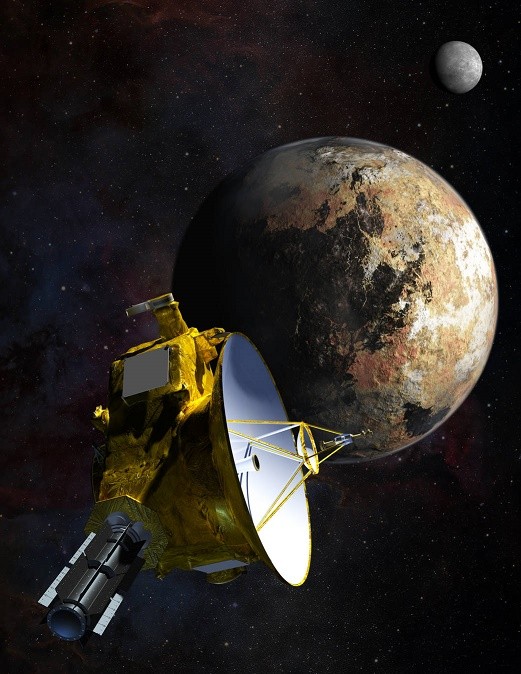After completing its epic mission, capturing stunning views of Pluto for the first time ever, NASA's New Horizons spacecraft will now begin its transmission of data and images that were taken during the mission, back to mission control on Earth.
This deluge of data will travel at the speed of light, where signals will take 4.5 hours to complete the journey of 3 billion miles spanning across the solar system to reach Earth. This means that the spacecraft will downlink all of its data at the speed of 1 to 4 kilobits every second where it will take this entire, precious scientific data about one year to return to Earth.
According to New Horizons' principal investigator, Alan Stern, this treasure trove of scientific data will come back home during the course of next year in order to help scientists obtain a better understanding of Pluto's history and planetary evolution.
Stern reveals that what's arriving from this crucial transmission is not just the remaining 95 percent of information that is still stored in New Horizons, but they are the best data sets and highest resolution images and spectra including important atmospheric data sets and much more.
The spacecraft was launched in January 2006 where it began its 3 billion mile journey to Pluto where it successfully reached the dwarf planet by "phoning home" or sending back a signal during the momentous flyby, as the probe finally reached just 7,700 miles away from the surface of the planet. After this flyby, the probe immediately sent high resolution images of the surface of Pluto.
In order to get to the farthest reaches of the solar system where Pluto lies, the probe took "naps" to conserve energy during this voyage. NASA reveals that the spacecraft uses a battery that converts radiation from plutonium decay into electricity which can power the spacecraft for more than 20 years of exploration.
To date, the probe is now travelling into the Kuiper Belt, which is located beyond the Pluto system, made up of millions of the smallest, icy worlds. After this pivotal and highly intensive transmission, NASA's next target for New Horizons is a Kuiper Belt object called 2014 MU69 located some one billion miles beyond Pluto.



























